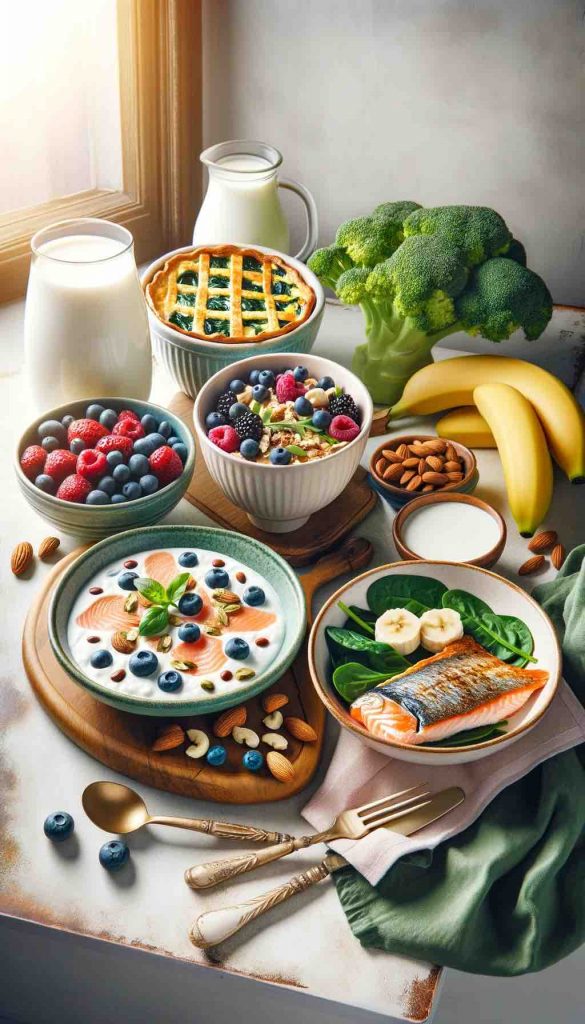
Hello, wonderful expectant mothers! As you embrace the beautiful journey of pregnancy, let’s spice up your nutrition with some folate-rich culinary creations. Folate isn’t just a nutrient; it’s a key player in your baby’s health, pivotal in preventing neural tube defects and supporting overall growth. Join me as we dive into recipes that are not only mouthwatering but also packed with this essential prenatal vitamin.
1. The Magic of Spinach Citrus Salad – “A Symphony of Health” Imagine a salad that sings with flavors and health benefits. Our Spinach Citrus Salad does just that. This dish is a folate powerhouse, crucial for your baby’s early neural development. The blend of leafy greens with the zest of citrus fruits provides a perfect balance of taste and nutrients. It’s a salad that not only tantalizes your taste buds but also ensures your little one’s proper brain and spine development.
2. The Warm Embrace of Lentil Soup – “A Bowl of Protective Comfort” On those days when you need warmth and comfort, our Lentil Soup is your go-to. Lentils, a remarkable source of folate, work in harmony with iron to safeguard you against pregnancy-induced anemia. Each spoonful of this heartwarming soup doesn’t just satiate your hunger; it builds a protective shield for your developing baby, ensuring they receive every bit of nutrition for a healthy start.
3. The Quick and Nutritious Avocado Bean Wrap – “A Bundle of Wellness” When time is of the essence, and you need a quick, nutritious bite, the Avocado Bean Wrap is your superhero. Rich in folate, avocados do more than just aid in neural development; they provide the necessary fats for your baby’s overall growth. This wrap isn’t just a lunch; it’s a gesture of care, wrapping your baby in a blanket of nutrition and taste.
4. The Delightful Orange-Glazed Salmon – “An Ode to Growth and Development” Dinner time can be a celebration of growth, and our Orange-Glazed Salmon is the perfect dish for this occasion. A fusion of DHA, omega-3, and folate, this recipe is more than just a delightful meal; it’s a crucial contributor to your baby’s brain and eye development. Each forkful is an ode to their growth, ensuring they receive the best of what nature offers.
5. The Refreshing Beet and Berry Smoothie – “A Cheer to Maternal Love” Finally, let’s raise a glass to your journey with our Beet and Berry Smoothie. This isn’t just a refreshing beverage; it’s a blend of antioxidants and folate, essential for maintaining vitality and health during pregnancy. Each sip is a cheer to your enduring strength and the unbreakable bond you’re forming with your baby.
A Toast to Your Pregnancy Journey As we conclude our culinary voyage, remember, these recipes are more than just food. They are a celebration of your pregnancy, an amalgamation of flavor and health, nurturing both you and your precious little one. I invite you to share your experiences, personalize these recipes, and most importantly, savor each moment of this extraordinary journey with joy and wellbeing.
FAQs
- What makes folate so important during pregnancy? Folate is crucial for preventing neural tube defects in the developing fetus. It plays a significant role in DNA synthesis and repair, as well as in the growth and development of the baby.
- Can I get enough folate from my diet, or should I take supplements? While a folate-rich diet is beneficial, most health professionals recommend taking a prenatal supplement to ensure you’re getting the recommended 400-1000 mcg of folic acid daily.
- Are there easy ways to include more folate in my daily meals? Absolutely! Incorporating foods like leafy greens, citrus fruits, lentils, and fortified cereals into your meals can significantly boost your folate intake.
- How can I make folate-rich meals more appealing if I have morning sickness? Opt for mild, easy-to-digest foods like smoothies or soups. Including ginger in your diet can also help alleviate nausea.
- Is it possible to have too much folate during pregnancy? Excessive folate intake is rare, especially from food sources. However, sticking to the recommended supplement dosage is important to avoid potential risks.
- Can folate-rich foods benefit me post-pregnancy? Yes, folate continues to be important post-pregnancy, especially if you’re breastfeeding. It aids in the recovery process and supports overall health.
- Are there any creative ways to incorporate folate into snacks? Try snacking on orange slices, nuts, or avocado toast. These are not only delicious but also provide a good folate boost.
- What are some folate-rich vegetarian options? Lentils, spinach, asparagus, and broccoli are fantastic vegetarian sources of folate.
- Can folate intake impact the baby’s weight? Adequate folate intake is linked to a healthier birth weight by supporting proper fetal development.
- How does folate intake influence overall pregnancy health? Folate supports a healthy pregnancy by aiding in the formation of red blood cells, reducing the risk of preeclampsia, and ensuring proper fetal development.
Blog Tags: Pregnancy Nutrition, Folate-Rich Recipes, Healthy Eating During Pregnancy, Maternal Health, Folic Acid, Prenatal Diet, Nutritious Meals for Expectant Mothers, Cooking for Pregnancy, Pregnancy Wellness, Baby Development Nutrition











